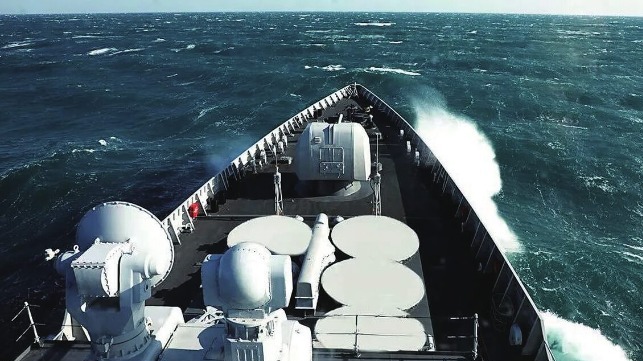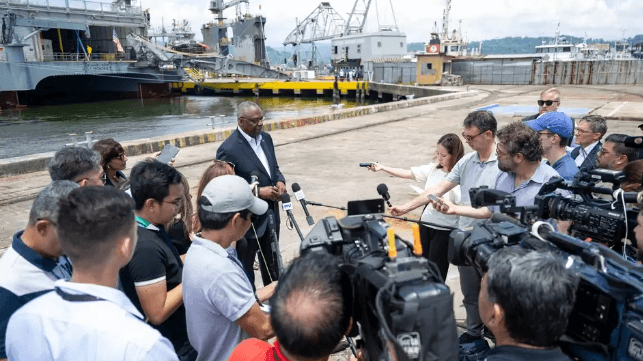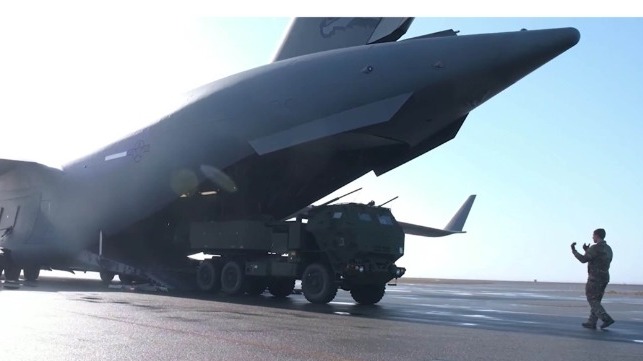WWIII
U.S. Navy's Top Officer Plans for Confrontation With China by 2027

The U.S. Navy's top officer is urging the force to get ready for a fight in the Pacific by 2027, and to prepare with what it has on hand.
"We cannot manifest a bigger traditional Navy in a few short years," wrote Chief of Naval Operations Lisa Franchetti in her newly-released Navigation Plan, the CNO's strategic guidance for the fleet. "We will continue to prioritize readiness, capability, and capacity— in that order. We must recognize that the Navy faces real financial and industrial constraints."
Her front and center focus is on preparing for conflict with China, centered on a much-debated timeline for a potential invasion of Taiwan. "The Chairman of the People’s Republic of China (PRC) has told his forces to be ready for war by 2027 — we will be more ready," she wrote.
The challenge is substantial. China's naval fleet is the largest in the world by fleet size, and it is rapidly modernizing. The world's largest shipbuilder, CSSC, is at the disposal of the PLA Navy, and the Chinese defense industrial base "is on a wartime footing," Franchetti said. The PLA has also worked hard to integrate its Navy, Rocket Force, Aerospace Force, Air Force and Cyberspace Force into a joint "warfighting ecosystem specifically designed to defeat ours."
To confront this growing challenge, Franchetti wants the Navy to focus on seven areas where it can make gains "in the fastest possible time with the resources we influence." There are no new initiatives or organizational structures, just a focus on making the most of what is available within three years' time. The top line item is eliminating maintenance delays across the board, freeing up more ship-days for possible deployment. The ambitious target is to achieve a minimum "combat surge ready" status for 80 percent of all ships, subs and aircraft by 2027.
"We will only accomplish this by getting platforms in and out of maintenance on time," wrote Franchetti.
The next objective is to roll out robotic and autonomous systems at meaningful scale. The Navy leadership has absorbed the lessons of recent conflicts in the Black Sea and the Red Sea, where unmanned drones and bomb boats have played a prominent role in combat. Franchetti's goal is to have robotic and autonomous systems available "for routine use by the commanders who will employ them" by 2027, with "mature capabilities" integrated into all deploying carrier strike groups.
Manning and servicemember quality of life also stand out as key priorities. The Navy was short by about 22,000 enlisted personnel at the start of the year, even after reducing minimum recruiting qualifications and introducing retention incentives. Franchetti wants to eliminate the manning gap by 2027 and achieve 95 percent fill for billets in deploying units. That initiative includes substantial changes in the way that the Navy provides for enlisted sailors: Franchetti wants to eliminate involuntary shipboard berthing when in homeport, improve housing options, and limit how long new sailors can be assigned to shipyard periods.
PHILIPPINES
U.S. Navy Underwrites Renewed Expansion at Subic Bay Naval Base

In the early 1900s, the U.S. Navy began construction on a sprawling base at Subic Bay on the Philippine island of Luzon, a U.S. colony at the time. That facility turned into a semipermanent launch pad for American power projection in Southeast Asia. Expanded to fill an essential role during the Vietnam War, Naval Base Subic Bay became the second-largest American overseas military base in the world, second only to nearby Clark Air Base. That ended in 1992, when the Navy's lease expired and negotiations to extend it failed - but recent activity suggests that American involvement at Subic Bay could soon resume.
Naval Sea Systems Command has a new contract with the Armed Forces of the Philippines to finance the construction of a new finger pier at Naval Operating Base Subic, the renamed home port for the Philippine Navy's surface combatants, according to USNI. In a reversal of fate, the Philippine Navy leases its 100 acres of space from an American hedge fund, which purchased the shipyard site out of bankruptcy several years ago. The docks in the leased area will not be enough to accommodate all of the newly-built tonnage that the Philippine Navy will be getting from Korean shipbuilders in the next few years, so the new finger pier will provide room for growth.
The construction on the new U.S. Navy-financed finger pier will be carried out by the local Subic Drydock Corporation, and will be administered by NAVSEA's International Fleet Support Program Office - the Navy's aftersales service and technical support bureau for foreign military sales. Among other clients, the office supports the Philippine Navy, which operates several former U.S. Coast Guard cutters.
American warships periodically call at Subic Bay while operating in the South China Sea, and the extra wharfage could help preserve pierside access for U.S. Navy port calls. Subic is located just 300 nautical miles from the Spratly Islands, less than a day's sailing away from this strategic flash point. The base has also provided a safe harbor when needed for critical repairs: when the damaged destroyer USS John S. McCain needed a port of refuge during transport to a shipyard in 2017, the vessel was taken to Subic Bay for inspection and stabilization.
After Russian Naval Drills Off Alaska, U.S. Army Sends Troops to Aleutians

After an uptick in Russian military activity in the North Pacific and Bering Sea, the U.S. Army has dispatched mobile rocket launchers and about 130 troops to the Aleutian Islands in order to display its ability to mobilize forces to far-flung sites. The deployment is a rare increase in presence in one of America's most remote regions.
The U.S. military has been closely watching Russian movements near the Aleutians. Over the course of the past week, one Russian tug, one frigate, two subs and eight Russian military planes came close to Alaska, according to the Pentagon. These joint deployments are part of the Russian-Chinese naval exercise "Ocean-24," one of Russia's largest naval drills in recent memory.
According to the Coast Guard, the Russian naval vessels crossed over into the U.S. exclusive economic zone in an apparent effort to avoid drifting sea ice. The cutter USCGC Stratton monitored their progress and reported that the small flotilla "operated in accordance with international rules and customs."
In July, the cutter USCGC Alex Haley encountered another Russian naval vessel about 30 miles southeast of Amukta Pass. The same month, four Chinese warships were spotted north of the Aleutians.
After the uptick in foreign activity, the U.S. Army dispatched a small task force with airborne troops and two HIMARS rocket launchers to Shemya Island, home of Eareckson Air Station. The last HIMARS deployment to Shemya occurred in 2020, and the Army described the exercise as a test of its ability to rapidly move forces to remote areas.
“As the number of adversarial exercises increases around Alaska and throughout the region, including June’s joint Russian-Chinese bomber patrol, the operation to Shemya Island demonstrates the division’s ability to respond to events in the Indo-Pacific or across the globe, with a ready, lethal force within hours,” said Maj. Gen. Joseph Hilbert in a statement. "Our ability to deploy combat-credible forces quickly and effectively to any location, no matter how remote, is critical to supporting the nation and our strong relationships with allies and partner nations."
Shemya Island is best known as the home base for the Cobra Dane radar, a giant tracking system built during the Cold War to monitor Soviet ballistic missile tests. Today, Cobra Dane is a tracking and targeting component of the Ballistic Missile Defense System, America's primary shield against nuclear-armed missiles.
No comments:
Post a Comment